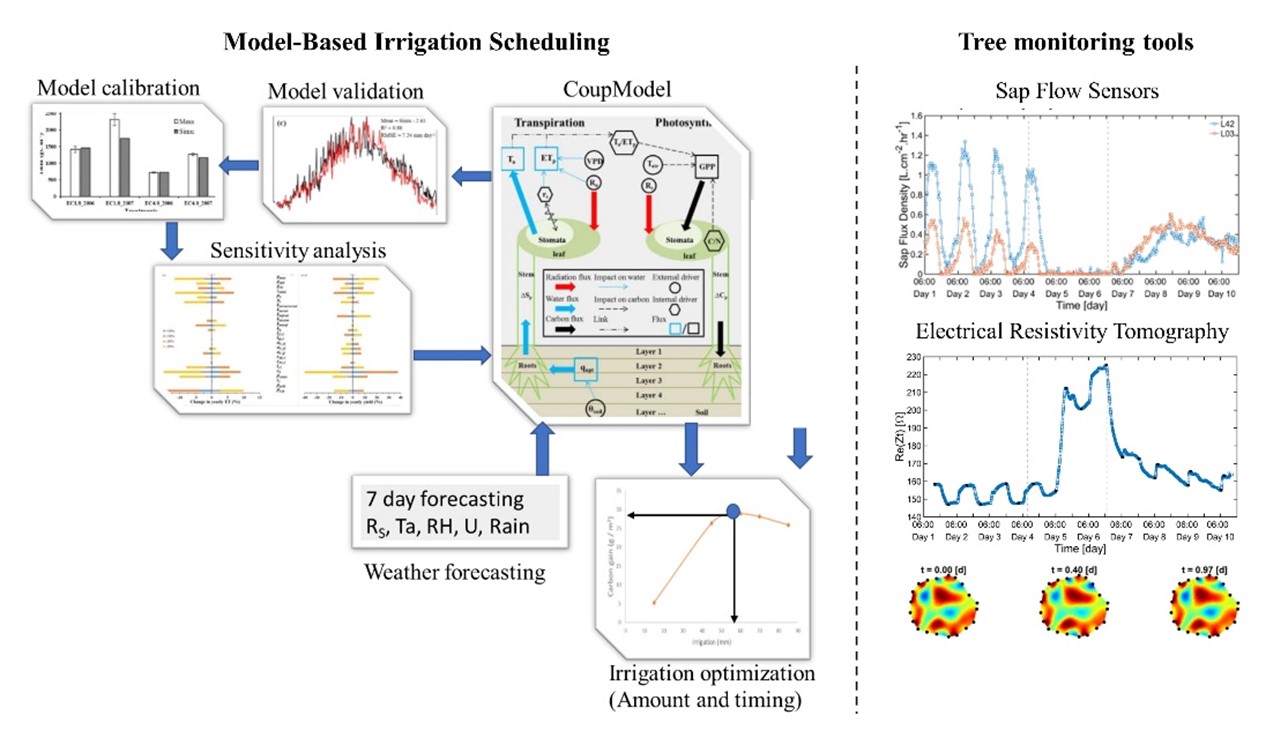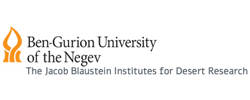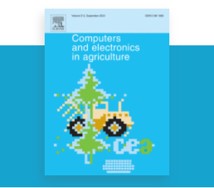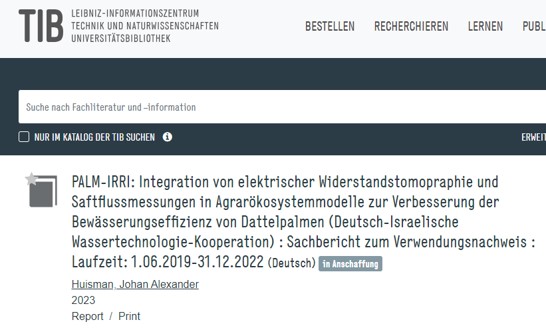The cultivation of date palms is widespread and exclusively depends on high-frequency irrigation. Within the joint German-Israeli research project PALM-IRRI, the toolbox for irrigation scheduling of date palms was extended with the use of electrical resistivity tomography for sap flux sensor installation and stem water content monitoring as well as strategies for model-based irrigation scheduling. (Project-ID: 02WIL1524)
Within the research project PALM-IRRI, two model-based approaches for irrigation scheduling were conceptualized. The first approach relies on a calibrated implementation of CoupModel. A set of model runs with a boundary condition that triggers irrigation each time the amount of water in the root zone decreases below a certain threshold provides a simulated relationship between the amount of carbon gained given a weather forecast and different amounts of applied irrigation, which shows a maximum that can be used for irrigation scheduling.
Furthermore, an alternative scheduling approach was developed using artificial neural networks trained on a set of simulations with a simplified soil-plant-atmosphere model. A simple graphical user interface implemented in Microsoft Excel allows to predict the pressure head threshold for irrigation scheduling based on weather forecasts, quality of irrigation water and irrigation system design. This simplified approach needs to be adapted the soil conditions at each site.
To support model parameterization and, more importantly, to verify the adequacy of model-based irrigation scheduling, suitable measurement tools are required. Within the project PALM-IRRI, both sap flux sensors and electrical resistivity tomography (ERT) were considered for this. The latter method was applied to date palms for the first time and showed promise to optimize sap flux sensor installation in the heterogeneous date palm stem. Field experiments with irrigation deprivation confirmed that both sensor types are suitable for detecting water stress. In addition, high-resolution monitoring of the electrical resistivity distribution showed diurnal variations, which were most likely related to changes in stem water content.
The extended toolbox that comprises a combination of model-based irrigation scheduling and real-time monitoring could allow farmers to maintain or improve yield while minimizing water use.




